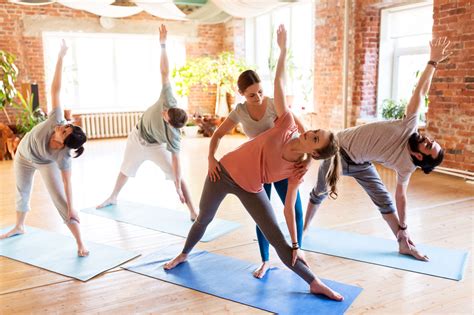Understanding the True Cost of Yoga Classes: A Comprehensive Breakdown
Yoga has become a global phenomenon, praised for its ability to improve mental clarity, flexibility, and overall health. As more people turn to yoga for its numerous benefits, the cost of classes has become a significant consideration. Whether you’re new to yoga or a seasoned practitioner, the price of attending yoga classes can vary significantly depending on various factors. In this article, we’ll break down the true cost of yoga classes, explore what influences these costs, and provide actionable advice for making yoga accessible to all budgets.
Introduction
While many recognize the physical and mental benefits of yoga, not everyone understands how much they should expect to pay for classes. The cost of yoga can range from free online videos to exclusive, high-end studio memberships that can reach several hundred dollars per month. But why is there such a wide range of costs, and what exactly are you paying for in a yoga class?
In this comprehensive article, we’ll take an in-depth look at the factors affecting the cost of yoga classes, the different pricing models, and how to find a class that fits your needs and budget. We’ll also explore the ethical considerations, historical context, and future trends in the yoga industry.
Key Concepts
- Drop-In Classes: One-time payments for a single yoga class, typically ranging from $10 to $30.
- Monthly Memberships: Regular, unlimited access to classes within a month, often priced between $100 and $200 per month.
- Class Packages: Bundled classes at a discounted rate, such as 5, 10, or 20 classes bought in advance.
- Private Sessions: One-on-one sessions with a yoga instructor, which can cost between $50 and $200 per hour.
- Online Yoga Platforms: Subscription services or one-off payments to access virtual yoga classes, ranging from $10 to $30 per month.
Historical Context
The commercialization of yoga has evolved significantly over time. Originally a spiritual practice from India, yoga was traditionally taught on a donation basis or as a part of spiritual discipline. In the West, yoga began as a niche activity, but over the last 50 years, it has grown into a multi-billion-dollar industry. The rise of high-end yoga studios, celebrity endorsements, and yoga retreats has significantly shifted the landscape, driving up prices and sometimes alienating potential practitioners due to high costs.
However, there has also been a resurgence of more accessible yoga options, particularly through online platforms, community centers, and donation-based classes, which seek to return to yoga’s more inclusive roots.
Current State Analysis
Today, the cost of yoga classes varies depending on several key factors:
- Location: Urban areas with higher costs of living tend to have more expensive yoga classes. For example, a yoga class in New York City might cost significantly more than in a small town.
- Studio Reputation: Well-known or specialized studios may charge premium prices due to their reputation, experienced instructors, or niche offerings like hot yoga, aerial yoga, or ashtanga yoga.
- Instructor Experience: Classes taught by highly qualified or celebrity instructors can command higher fees, as can specialized workshops or events.
- Class Type: Specialty classes like prenatal yoga, restorative yoga, or advanced vinyasa flows may also come with a higher price tag due to their targeted focus and the expertise required to teach them.
- Technology and Streaming: Online yoga classes have disrupted the market, offering more affordable alternatives through platforms like YouTube, YogaGlo, or Gaia. These often provide unlimited access to thousands of yoga videos for a low subscription fee.
Table: Examples of Yoga Pricing Based on Different Factors
| Type of Class | Cost (Low) | Cost (High) |
|---|---|---|
| Drop-in Class | $10 | $30 |
| Monthly Membership | $100 | $200 |
| Class Package (10 classes) | $90 | $150 |
| Private Session | $50 | $200 |
| Online Class Subscription | $10/month | $30/month |
Practical Applications
Understanding the cost of yoga classes can help you make informed decisions about which classes and pricing models suit your lifestyle and budget. Here are some actionable tips:
- Start with Online Yoga: If you’re a beginner or looking to practice yoga on a budget, online platforms like YouTube or apps like DownDog provide access to thousands of classes at little to no cost.
- Try Community Classes: Many yoga studios offer donation-based or pay-what-you-can classes to make yoga accessible to all. Additionally, some local parks and community centers host free or low-cost yoga sessions.
- Use Class Packages: If you attend yoga classes regularly, buying a class package can save you money in the long run.
- Attend Off-Peak Times: Some studios offer discounted rates for early morning or afternoon classes to attract more students during less popular times.
Case Studies
To illustrate how yoga pricing can vary, let’s look at two case studies:
Case Study 1: Urban Studio in Los Angeles
Sarah, a working professional in Los Angeles, regularly attends classes at a boutique yoga studio in the city. Drop-in classes at this studio cost $25 per class, and a monthly membership is priced at $175. Sarah takes advantage of their $150 for 10 classes package, saving her $100 over time. While this is on the higher end, Sarah values the experience, community, and personalized instruction at this studio.
Case Study 2: Online Yoga Subscription
John, a remote worker based in a rural town, practices yoga through an online subscription service. He pays $20 per month for unlimited access to hundreds of pre-recorded classes. John appreciates the flexibility and affordability of online yoga, especially since he doesn’t have a local studio nearby.
Stakeholder Analysis
The stakeholders in the yoga industry are diverse and include:
- Yoga Students: Individuals seeking to improve their physical and mental well-being through yoga.
- Instructors: Certified professionals teaching classes, workshops, or one-on-one sessions.
- Studio Owners: Entrepreneurs running yoga studios, often balancing the need for profitability with making yoga accessible.
- Online Platforms: Companies offering digital yoga services, making yoga accessible worldwide at lower costs.
Implementation Guidelines
For those looking to start or expand a yoga practice, here are some practical steps:
- Research Local Studios: Look into different studios in your area to compare prices and see if they offer free introductory classes.
- Explore Online Options: Take advantage of free trials for online platforms to determine if this format works for you.
- Mix and Match: You don’t have to commit to one format. Attend in-person classes occasionally while maintaining an online practice at home to save costs.
Ethical Considerations
The cost of yoga can sometimes conflict with the practice’s roots in accessibility and community. Studios and instructors should strive to make yoga inclusive while still covering operational costs. Donation-based or sliding scale pricing models can bridge this gap.
Limitations and Future Research
While this article has provided a comprehensive look at the cost of yoga classes, there are several limitations:
- Data on yoga pricing can vary significantly by region and availability of studios.
- The article primarily focuses on Western-style studio yoga and may not fully encompass global variations in yoga practice and pricing.
- As the digital yoga space grows, future research should focus on the long-term sustainability of online platforms versus traditional studio models.
Future research could explore the psychological and community aspects of yoga classes, comparing the experiences of in-person versus online practitioners. Additionally, the impact of price on long-term commitment and mental health outcomes warrants further exploration.
Discovering Your Unique Yoga Teaching Style: A Comprehensive Guide for New and Experienced Instructors
As a yoga teacher, finding your unique teaching style can be one of the most challenging and rewarding aspects of your career. Your personal style influences how you connect with students, structure your classes, and leave a lasting impact on your community. This guide offers insights into the different dimensions of yoga teaching, helping both new and seasoned instructors discover and refine their approach to teaching. Whether you’re drawn to traditional forms or experimental practices, there is a style that aligns with your vision, personality, and goals.
Key Concepts: What Defines a Yoga Teaching Style?
A yoga teaching style is shaped by several factors, ranging from your personality and experience to your understanding of yoga philosophy and anatomy. It also depends on the needs of your students, the environment in which you teach, and the evolution of your personal practice. The main components that define a yoga teaching style include:
- Philosophy: The underlying principles and traditions that guide your approach to yoga.
- Class Structure: The way you organize your classes, including warm-ups, sequencing, and cooldowns.
- Teaching Cues: The language and instructions you use to guide students through poses and transitions.
- Focus Area: Your chosen emphasis—whether it’s alignment, breathwork, mindfulness, physical intensity, or spiritual growth.
- Student Engagement: How you interact with your students and create an inclusive, supportive environment.
Historical Context: Evolution of Yoga Teaching Styles
Yoga has evolved over thousands of years, and so have the teaching styles that convey its wisdom. Originally passed down orally through sacred texts like the Vedas and Upanishads, yoga was practiced as a spiritual discipline aimed at enlightenment. Over time, physical postures, or asanas, gained prominence, especially in the 20th century with figures like Tirumalai Krishnamacharya, who is often credited as the “father of modern yoga.” The diversity of yoga styles today reflects a blend of ancient traditions and modern innovations, ranging from the rigorous practice of Ashtanga to the slow, meditative approach of Yin Yoga.
Current State Analysis: What Are the Popular Yoga Styles Today?
Yoga teaching today encompasses a wide range of styles, each with its own philosophy, intensity level, and focus. Some of the most popular contemporary yoga styles include:
| Yoga Style | Philosophy/Focus | Level of Intensity |
|---|---|---|
| Hatha Yoga | Foundation of yoga, focusing on basic postures and breath control | Low to Medium |
| Vinyasa Yoga | Flowing sequences synchronized with breath | Medium to High |
| Ashtanga Yoga | Structured, physically demanding practice following set sequences | High |
| Yin Yoga | Slow, meditative practice focused on holding poses for extended periods | Low |
| Iyengar Yoga | Emphasis on alignment and the use of props | Low to Medium |
| Kundalini Yoga | Combines breathwork, meditation, and physical postures to awaken energy | Medium to High |
| Restorative Yoga | Deep relaxation through supported, passive poses | Low |
| Hot Yoga | Practiced in a heated room, often based on Bikram sequences | High |
Practical Applications: How to Find and Develop Your Style
Developing your own teaching style is an ongoing process that reflects both your personal growth and your teaching experience. Here are practical steps to guide you:
- Start with Self-Reflection: Consider why you practice yoga and what you hope to share with your students. Do you want to focus on physical health, mental well-being, or spiritual growth?
- Experiment with Different Styles: Take classes from a variety of instructors and explore different styles to see what resonates with you.
- Embrace Your Strengths: If you have a strong knowledge of anatomy, lean into alignment-based cues. If you’re a natural motivator, develop high-energy, inspiring sequences.
- Seek Feedback: Ask your students for feedback about what they find most helpful and engaging in your classes.
- Stay Open to Evolution: Your teaching style can—and should—evolve as you gain more experience and deepen your personal practice.
Case Studies: Yoga Teachers Who Defined Their Style
Learning from the journeys of well-known yoga teachers can offer inspiration. Below are examples of instructors who have significantly impacted the yoga world by developing unique teaching styles:
| Instructor | Teaching Style | Key Contributions |
|---|---|---|
| B.K.S. Iyengar | Alignment-based, precise use of props | Popularized the use of props to make yoga accessible |
| Pattabhi Jois | Ashtanga Yoga, fixed sequences | Developed a methodical approach to physically intense practice |
| Seane Corn | Vinyasa Flow, spiritually infused | Integrates activism and social justice into yoga teachings |
| Adriene Mishler | Gentle, approachable, and inclusive | Democratized yoga for at-home practitioners with accessible online content |
Stakeholder Analysis: Who Benefits from Your Yoga Teaching Style?
When developing your teaching style, it’s essential to understand who your key stakeholders are and how they benefit from your approach. Stakeholders in the yoga ecosystem include:
- Students: The primary beneficiaries of your teaching. Their needs, goals, and feedback should inform your style.
- Studios/Organizations: They may have specific requirements or target audiences, which will influence how you teach.
- Community: How does your teaching foster inclusivity, diversity, and well-being within the broader community?
Implementation Guidelines: Bringing Your Teaching Style to Life
Once you’ve developed your teaching style, the next step is to implement it effectively. Here are strategies for putting your style into practice:
- Lesson Planning: Develop detailed class plans that reflect your teaching philosophy and align with your students’ goals.
- Consistent Feedback: Regularly gather feedback from your students and make adjustments to your teaching style accordingly.
- Continued Learning: Stay informed about new research, techniques, and developments in yoga to keep evolving your practice.
Ethical Considerations: Balancing Personal Style with Responsibility
Yoga teachers have a unique ethical responsibility to their students, particularly when it comes to safety, inclusivity, and cultural respect. When developing your teaching style, consider the following ethical guidelines:
- Inclusivity: Ensure your teaching is accessible to individuals of all abilities and backgrounds.
- Cultural Respect: Acknowledge the origins of yoga and avoid cultural appropriation in your teaching.
- Safety: Always prioritize the safety of your students, offering modifications and listening to their physical needs.
Limitations and Future Research: Navigating the Complexities of Teaching Yoga
No teaching style is perfect, and every instructor faces challenges in balancing personal expression with the needs of their students. Some limitations to consider include:
- Adaptability: Your preferred style may not resonate with every student or class.
- Ongoing Training: Staying up-to-date on anatomy, biomechanics, and teaching techniques is a continual process.
- Balancing Innovation and Tradition: Finding a balance between honoring yoga’s roots and incorporating modern advancements can be tricky.
Future research could explore new ways to integrate yoga with technology, especially in the post-pandemic world where online classes have become the norm. Additionally, more studies are needed on how yoga teaching styles impact student outcomes, both physically and mentally.
Expert Commentary: Insights from Experienced Yoga Teachers
Leading yoga teachers agree that finding your own teaching style is a deeply personal journey. Yoga instructors like Seane Corn emphasize the importance of authenticity, while others, such as Adriene Mishler, advocate for accessibility and inclusivity. Ultimately, your teaching style should reflect not only your passion for yoga but also your commitment to serving the diverse needs of your students.








